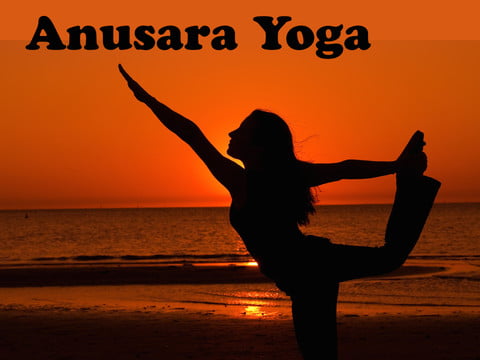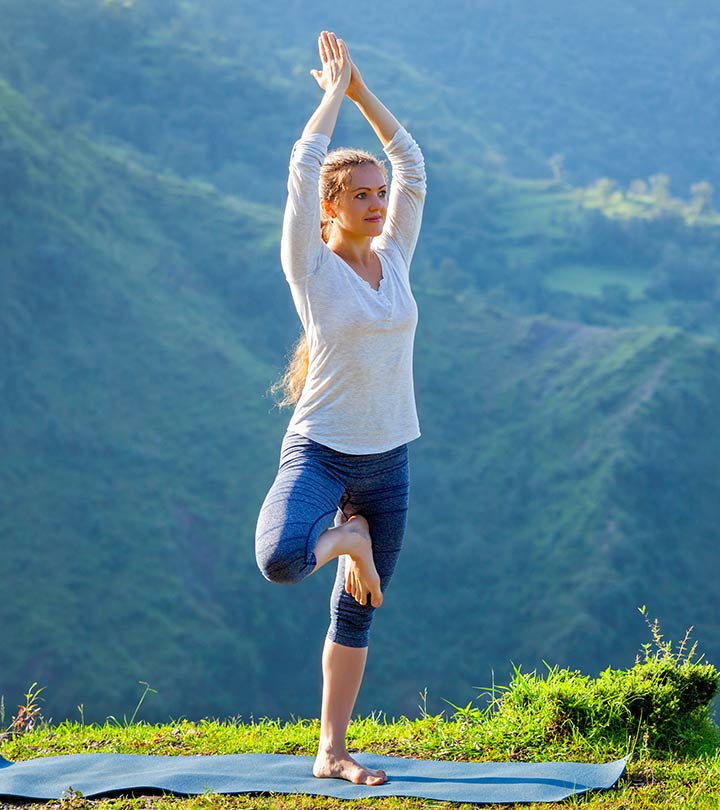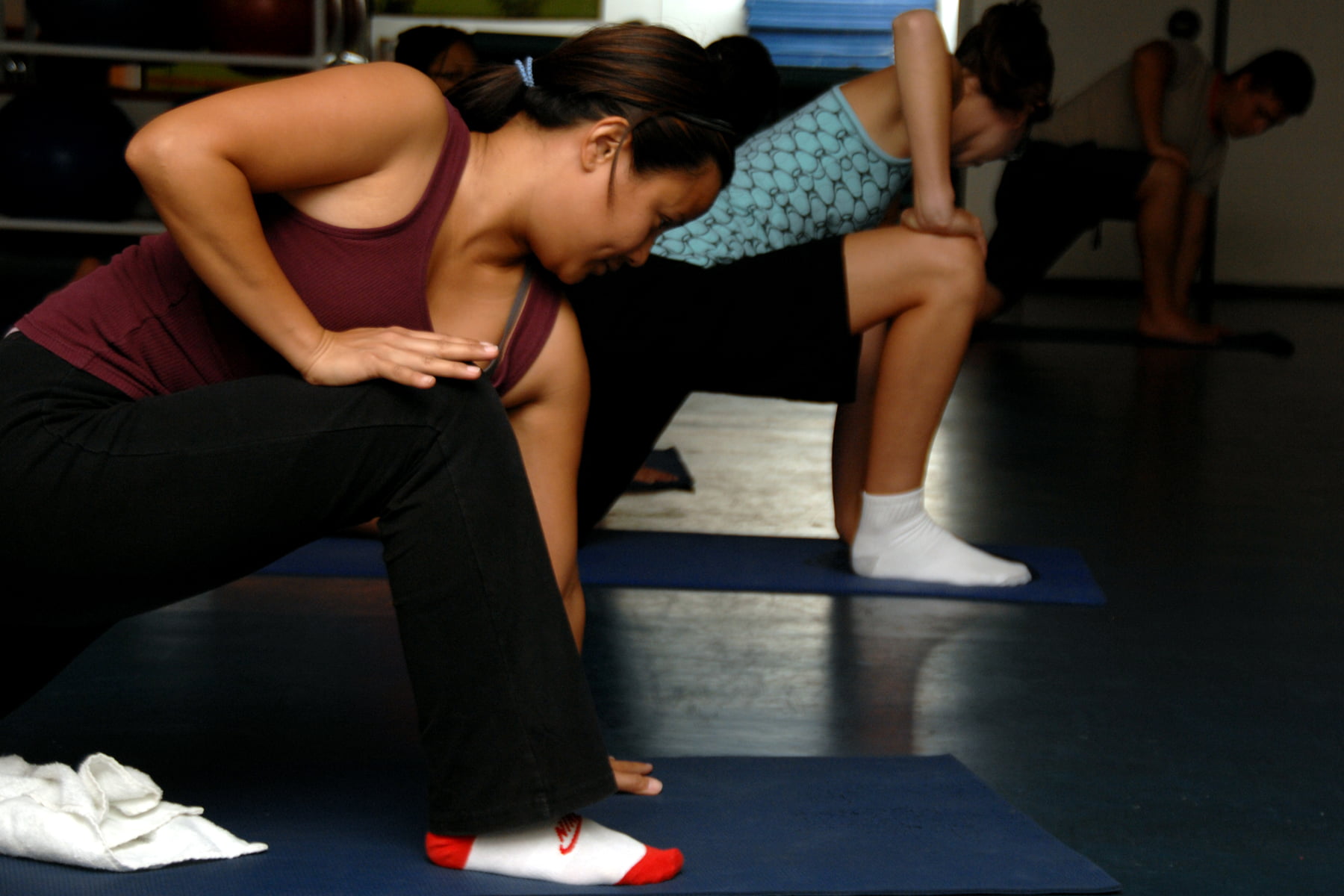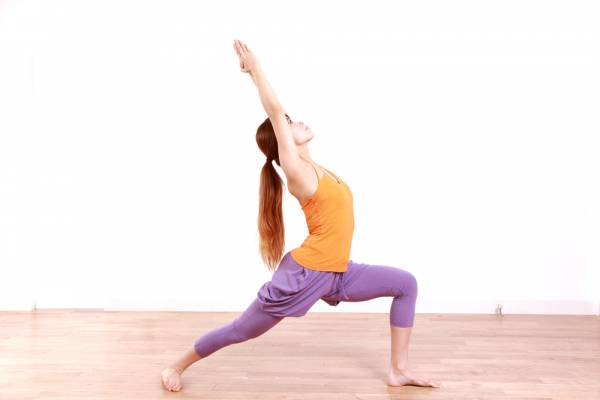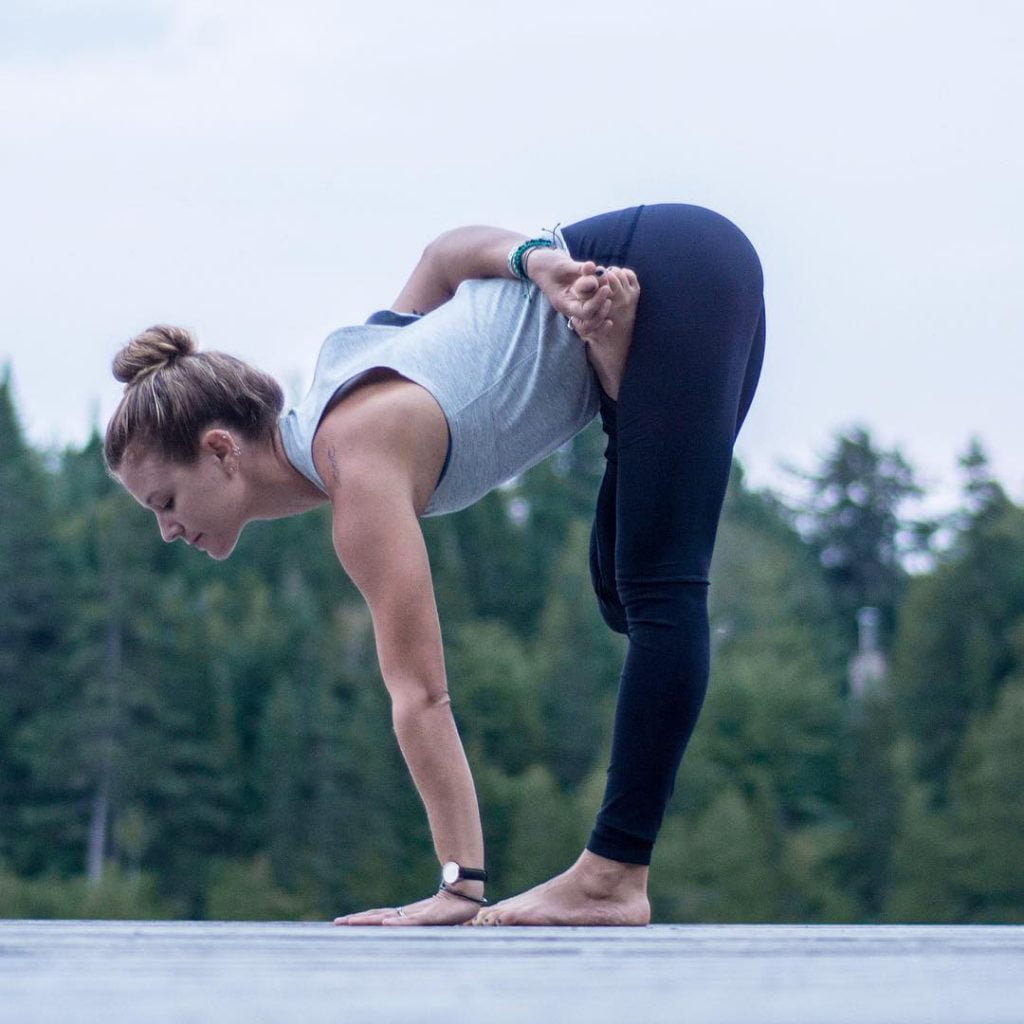
Sanskrit Name: Ardha Baddha Padmottanasana (अर्ध बद्ध पद्मोत्तासन)
English Name: Half Bound Lotus Standing Forward Bend
Type of Yoga: Ashtanga Yoga
Level of Yoga: Advanced / Intermediate
Duration: 30 to 60 seconds or as per your Capacity
Target Area: Stomach, Leg, thigh
Strengthens: Hamstrings, Hips, Knees, and Shoulders
This seat is a stand-up balancing pose. In the beginning, it can be a bit difficult to perform this posture, but you can easily do this asana by practicing regularly. Many mental and emotional problems will be improved and balanced by the regular practice of Ardha Baddha Padmottanasana. It provides strength to the hips, shoulders, hamstrings, and knees.
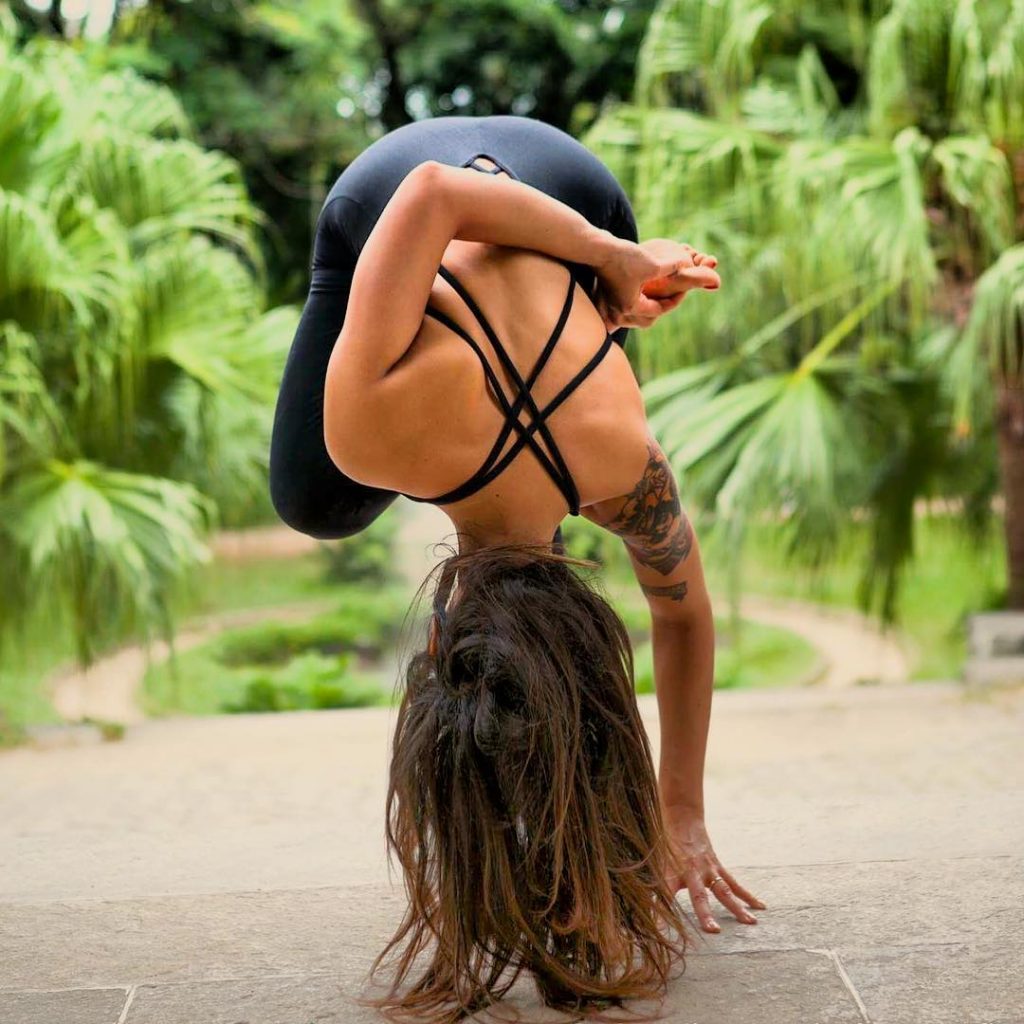
Table of Contents
What Does It Mean By Ardha Baddha Padmottanasana?
Ardha Baddha Padmottanasana is also called the Half Bound Lotus Standing Forward Bend in the English language. The name of Ardha Baddha Padmottanasana is composed of five Sanskrit language words, where
The first word is “Ardha (अर्ध)”, which means “Half”
Then the second word is “Baddha (बद्ध)”, which means “Bound”
The third word is “Padma (पद्म)”, which means “Lotus”
Then the fourth word is “Uttana (उत्तान)”, which means “Standing Forward Bend”
And finally, the fifth word is “Asana (आसन)”, which means “Yoga Pose”.
Ardha Baddha Padmottanasana, also known as Half Bound Lotus Standing Forward Bend Pose, is an intermediate to advanced posture found in the Ashtanga Yoga Series. This pose involves deep stretching and extension of the entire body in a forward bending motion.
Let’s now about the method of doing Ardha Baddha Padmottanasana properly as well as its precautions, preparatory poses, follow-up poses, beginner’s tips, and benefits below:
Preparatory Poses of Ardha Baddha Padmottanasana:
- Utthita Parsvakonasana (उत्थित पार्श्वकोणासन) or Extended Angle Pose
- Prasarita Padottanasana (प्रसारित पादोत्तासन) or Wide-Legged Forward Bend
- Parivrtta Parsvakonasana (परिवृत्त पार्श्वकोणासन) or Revolved Side Angle Pose
- Utthita Hasta Padangusthasana (उत्थित हस्त पादंगुष्ठासन) or Extended Hand-To-Big-Toe Pose
- Parsvottanasana (पर्श्वोत्तनासन) or Intense Side Stretch Pose
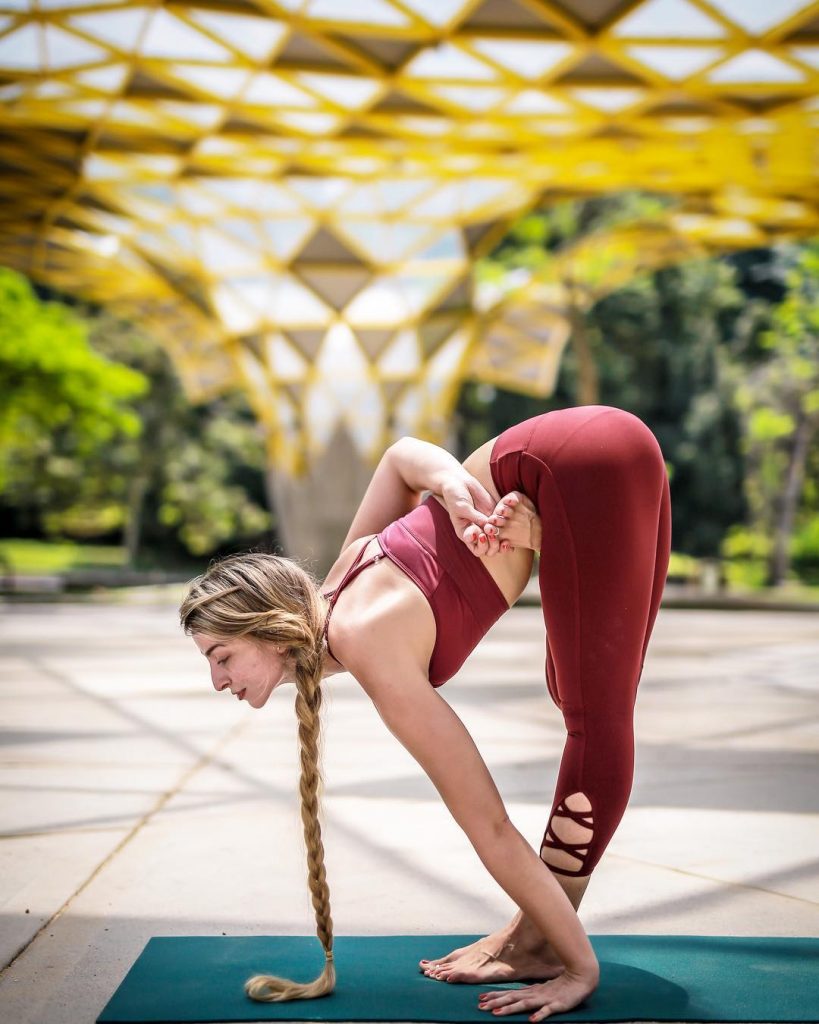
Method of doing Ardha Baddha Padmottanasana:
- At first, stand in Tadasana or Mountain Pose
- Inhaling, lift your left leg and bring the left foot on the right thigh and bring it as much as possible
- In this posture, you will get stretch on your left hip and knee (Keep the focus on your right leg to maintain balance)
- If the foot is sliding downwards, then you can hold it with the right hand
- Now take your left hand from the back and hold the left toe
- Learn the joints of the hip, leaving the breath – be careful not to bend the joints of the waist or knee joints
- Breathe while bending down
- Place your left hand on the ground beside your left foot
- Take five breaths in total and leave them out so that you can stay in the asana for 30 to 60 seconds
- Gradually, such as strength and flexibility in your body, you can increase the time (do not exceed 90 seconds)
- Try to keep your back straight, and keep the left leg straight
- Let your head hang tight so that your neck muscles are not stressed
- After breathing 5 times you can come out of this posture
- After practice, the asana on the left side, repeat all the steps on the right side too
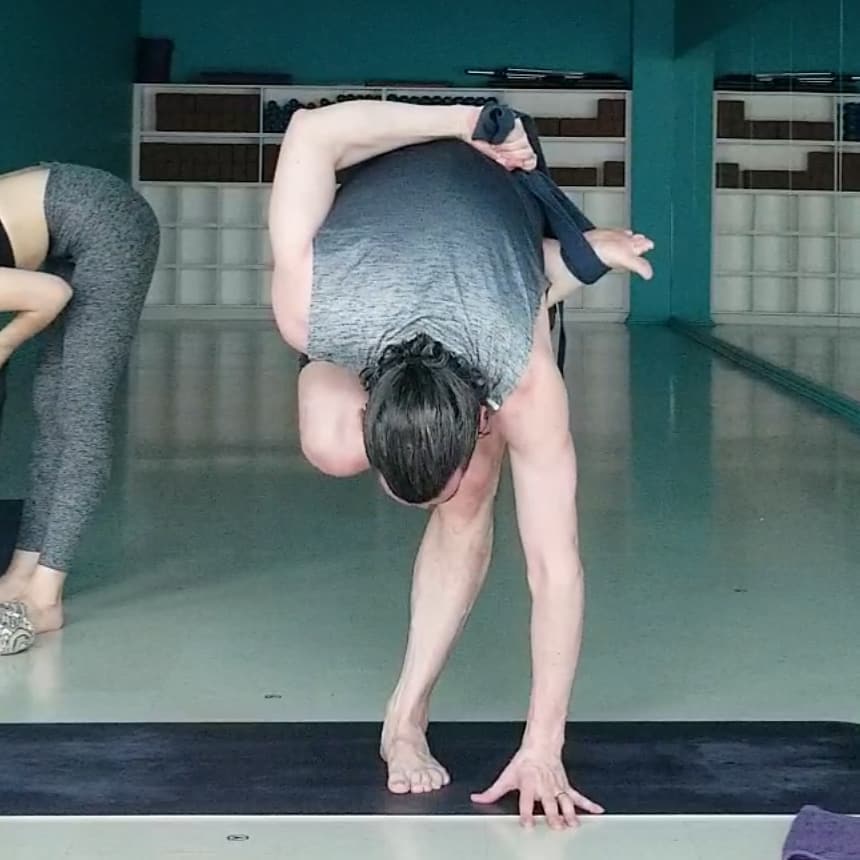
Beginner’s Tips:
In case your hand does not come fully behind the back, then you will not be able to hold the toe. If this is the case, keep your hands on the back and do not force it forward.
In case your foot does not reach the top of the thigh, you will not be able to hold the toe. If this is so, bring the feet upward as much as possible and do not force them, and lean forward a little to hold the toe
Follow-up Poses of Ardha Baddha Padmottanasana:
- Dandasana (दंडासन) or Staff Pose
- Utkatasana (उत्कटासन) or Chair Pose
- Virabhadrasana 1 (वीरभद्रासन 1) or Warrior Pose 1
- Virabhadrasana 2 (वीरभद्रासन 2) or Warrior Pose 2
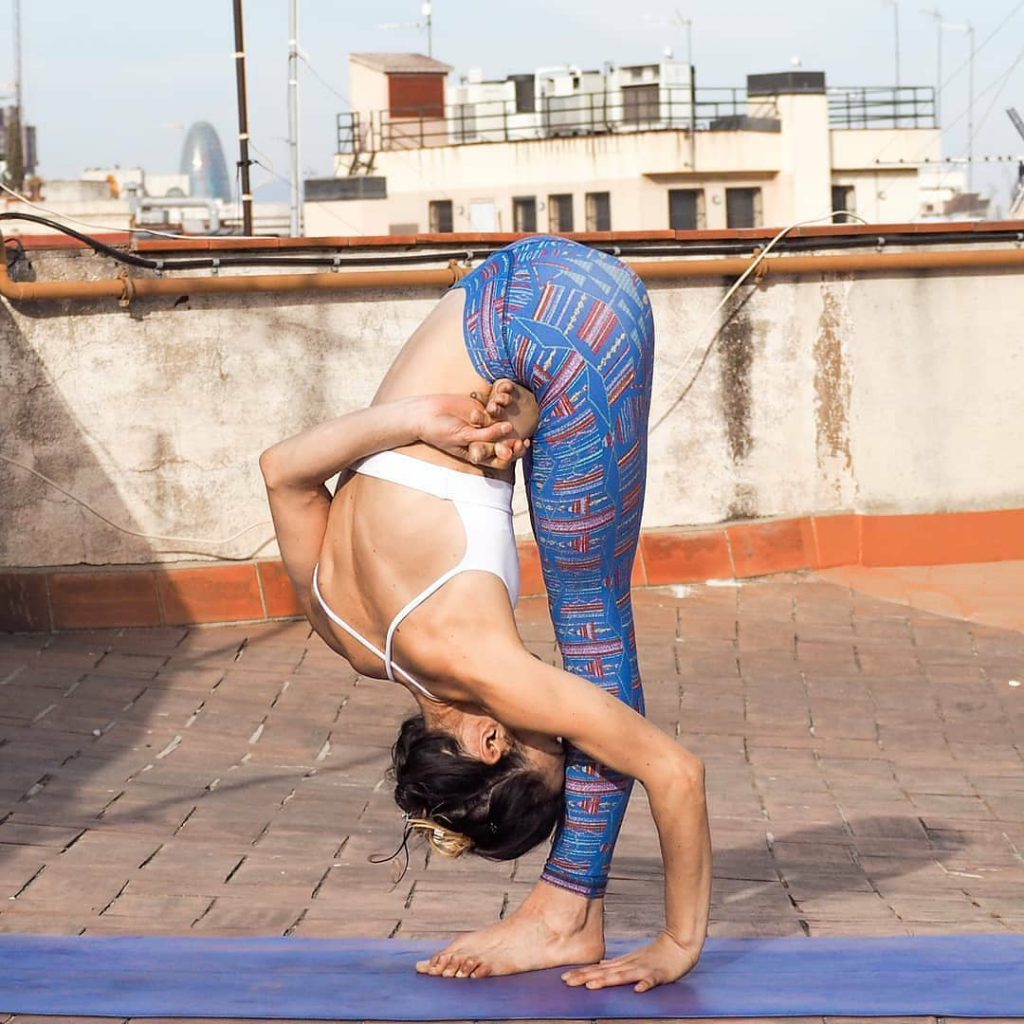
Precautions of Ardha Baddha Padmottanasana:
- Do not practice Ardha Baddha Padmottanasana if you have problems with lower back pain.
- Those who have pain in their knees should not practice Ardha Baddha Padmottanasana.
- If you have a hamstring injury, do not practice Ardha Baddha Padmottanasana.
- In case you feel any knee joint or hip joint discomfort then you must avoid practicing this posture.
- Do not put too much emphasis on your physical capacity.
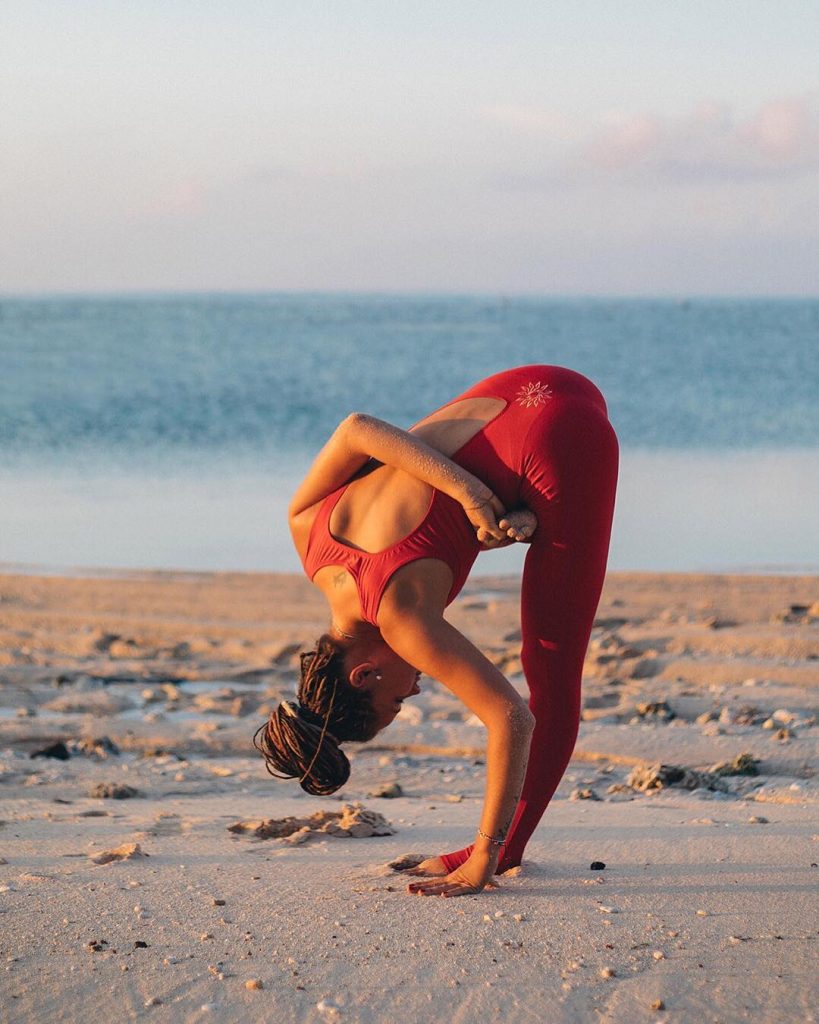
Benefits of Ardha Baddha Padmottanasana:
The Ardha Baddha Padmottanasana tests and refines the practitioner’s ability to maintain equilibrium and concentration. For a beginner, the posture could be challenging, but with consistent practice, it can be mastered. See below the benefits of Ardha Baddha Padmottanasana.
Improves Flexibility:
It is an extended position. It entails hip, hamstring, ankle, shoulder, and arm stretches. Stretching muscles increase their flexibility. One’s range of motion, joint mobility, and agility are all improved by lifting and folding one leg like in Ardha Padmasana. While employing the pelvic and psoas muscles, balancing the entire body weight on one side helps to strengthen the leg and increase the flexibility of the affected joints and muscles. The lower back opens up as a result of the hip forward bends, stretching the surrounding muscles and increasing the flexibility of the entire spine.
Enhanced Digestion:
The folded foot of Ardha Baddha Padmottanasana reaches the stomach during the forward bend. The abdominal organs contract as a result of the pressure. As a result, the digestive system is stimulated and begins to secrete digestive fluids. Additionally, it cures gastric disorders.
Facilitates Respiration:
When the hand grips the toe from behind, the standing half-bound lotus stance enlarges and opens up the chest. It aids in respiratory organ enlargement, which enhances the respiratory system’s performance. With the core and abdominal muscles contracted in Ardha Baddha Padmottanasana, the breath is first influenced, occasionally making it difficult to breathe deeply. The hand’s binding movement opens the front of the body by enlarging the chest and shoulders and guiding the breath. The chest widens as a result, allowing the intercostal muscles greater room to expand. Therefore, breathing is improved with breath awareness, which finally aids in maintaining balance in the pose.
Increases Concentration:
The root chakra (Muladhara) opens up as a result of maintaining equilibrium during the forward bend. Consistently performing this stance improves their feeling of equilibrium, focus, and concentration. As a result, it also enhances self-awareness.
Awakens Body Chakra:
The position also activates the sacral chakra since it involves the abdominal cavity. It strengthens the practitioner’s reproductive system and emotional well-being. The forward bend’s movement activates the Solar Plexus Chakra while also stimulating the Ajna Chakra to maintain equilibrium in the body. The inverted position of the head also stimulates the Crown Chakra.
Stimulates Nervous System:
Ardra Baddha Padmottanasana involves lowering the head to the ground. It increases the amount of blood flowing to the head and provides the brain’s cells with oxygen. The neurological system has a calming and soothing sensation as a result.
Stretches, Strengthens, Lengthens Body:
Due to the balanced nature of Ardha Baddha Padmottanasana, there is added pressure on the quadriceps, gluteus, hamstrings, and calves, as well as the hip, knee, and ankle joints. Along with the muscles of the arms and shoulders (binding one hand from behind), the legs, spine (stretched as it lengthens to move in a forward bend), core, and the associated muscles are all strengthened.
Makes Body Strong:
One will feel strong and cognitively and emotionally stable after integrating all of their body components in this stance. Additionally, if the mind drifts and leaves the body, alignment, and breath, equilibrium is lost. Thus, maintaining balance by distributing one’s weight evenly across all four corners of the grounded foot while purposefully keeping one’s body relaxed and eight improves breathing and sharpening one’s sense of attention and concentration. To keep the knee safe while folding forward, it should also be forced down until it is vertical.
Stimulation and Organs:
In the final position, pulling the chest and core together to bring the chin nearly to the knee puts pressure on the belly, which in turn stimulates the body’s reproductive and digestive systems and facilitates better disposal. The abdomen and navel are pressed by the folded leg’s heel. This ignites the body’s Jatargni (metabolic fire). The body’s ability to digest food and absorb nutrients is improved by this stimulation.
Others:
For runners, athletes, or climbers, Half Bound Lotus Standing Forward Bend is a terrific addition to the yoga practice since it develops muscle strength, flexibility, and endurance while beautifully opening the hips, chest, and shoulders. Students can gain from regulating their thyroid, managing their diabetes, and resolving difficulties associated with insomnia by applying pressure to their stomach region and adding pressure from their heels.
Contraindications Of Ardha Baddha Padmottanasana:
Since Ardha Baddha Padmottanasana is a standing forward bend of the advanced level, additional safety measures must be taken when performing it. They are described below:
- Half-Bound Lotus Standing Forward with Injuries The grounded foot and folded leg both experience pressure at the knees, ankles, and toes during bending. Students who are healing from joint injuries should stay away from this stance. This advanced inversion-stretch exercise should not be performed by students who have injuries to their hips, shoulders, arms, neck, rib cage, hamstrings, lower back, or visceral organ problems.
- Due to the nature of this practice, pupils with any form of physical sickness, brittle bones, high blood pressure, vertigo, dizziness, heart-related conditions, or severe sciatica are advised to stay away from it. Additionally, it should not be taken by those who have arthritis or knee discomfort, diarrhea, an upset stomach, or headaches or migraines. Patients with glaucoma should stay away from Ardha Baddha Padmottanasana.
- This practice necessitates awareness and concentration on maintaining balance in the stance. A lack of understanding of the relationship between the body and breath can make the practice uncomfortable and disrupt one’s energy levels. Therefore, teachers shouldn’t expose these pupils to this practice.
- Because this position is balanced in nature and puts strain on the abdomen, pregnant people and women who are menstruating should avoid it. Yoga instructors should refrain from teaching this pose to seniors unless they are experienced practitioners or have the necessary background knowledge and body-breath awareness.
Conclusion:
Regardless of how frightening Ardha Baddha Padmottanasana appears to be, it offers a number of advantages. This justifies trying the posture. For the same benefits, you can attempt this stance with simple tweaks & variations. Additionally, it remarkably rejuvenates the human body because it combines two asanas. It enhances the pose’s allure and benefits.

